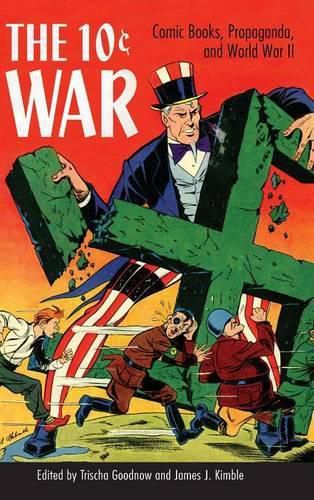Readings Newsletter
Become a Readings Member to make your shopping experience even easier.
Sign in or sign up for free!
You’re not far away from qualifying for FREE standard shipping within Australia
You’ve qualified for FREE standard shipping within Australia
The cart is loading…






This title is printed to order. This book may have been self-published. If so, we cannot guarantee the quality of the content. In the main most books will have gone through the editing process however some may not. We therefore suggest that you be aware of this before ordering this book. If in doubt check either the author or publisher’s details as we are unable to accept any returns unless they are faulty. Please contact us if you have any questions.
The Allied victory in World War II relied on far more than courageous soldiers. Americans on the home front constantly supported the war effort in the form of factory work, war bond purchases, salvage drives, and morale-rallying efforts. Motivating these men, women, and children to keep doing their bit during the war was among the conflict’s most urgent tasks.
One of the most overlooked aspects of these efforts involved a surprising initiative - comic book propaganda. Even before Pearl Harbor, the comic book industry enlisted its formidable army of artists, writers, and editors to dramatize the conflict for readers of every age and interest. Comic book superheroes and everyday characters modeled positive behaviors and encouraged readers to keep scrapping. Ultimately those characters proved to be persuasive icons in the war’s most colorful and indelible propaganda campaign.
The 10 Cent War presents a riveting analysis of how different types of comic books and comic book characters supplied reasons and means to support the war effort. The contributors demonstrate that, free of government control, these appeals produced this overall imperative. The book discusses the role of such major characters as Superman, Wonder Woman, and Uncle Sam along with a host of such minor characters as kid gangs and superhero sidekicks. It even considers novelty and small presses, providing a well-rounded look at the many ways that comic books served as popular propaganda.
$9.00 standard shipping within Australia
FREE standard shipping within Australia for orders over $100.00
Express & International shipping calculated at checkout
This title is printed to order. This book may have been self-published. If so, we cannot guarantee the quality of the content. In the main most books will have gone through the editing process however some may not. We therefore suggest that you be aware of this before ordering this book. If in doubt check either the author or publisher’s details as we are unable to accept any returns unless they are faulty. Please contact us if you have any questions.
The Allied victory in World War II relied on far more than courageous soldiers. Americans on the home front constantly supported the war effort in the form of factory work, war bond purchases, salvage drives, and morale-rallying efforts. Motivating these men, women, and children to keep doing their bit during the war was among the conflict’s most urgent tasks.
One of the most overlooked aspects of these efforts involved a surprising initiative - comic book propaganda. Even before Pearl Harbor, the comic book industry enlisted its formidable army of artists, writers, and editors to dramatize the conflict for readers of every age and interest. Comic book superheroes and everyday characters modeled positive behaviors and encouraged readers to keep scrapping. Ultimately those characters proved to be persuasive icons in the war’s most colorful and indelible propaganda campaign.
The 10 Cent War presents a riveting analysis of how different types of comic books and comic book characters supplied reasons and means to support the war effort. The contributors demonstrate that, free of government control, these appeals produced this overall imperative. The book discusses the role of such major characters as Superman, Wonder Woman, and Uncle Sam along with a host of such minor characters as kid gangs and superhero sidekicks. It even considers novelty and small presses, providing a well-rounded look at the many ways that comic books served as popular propaganda.